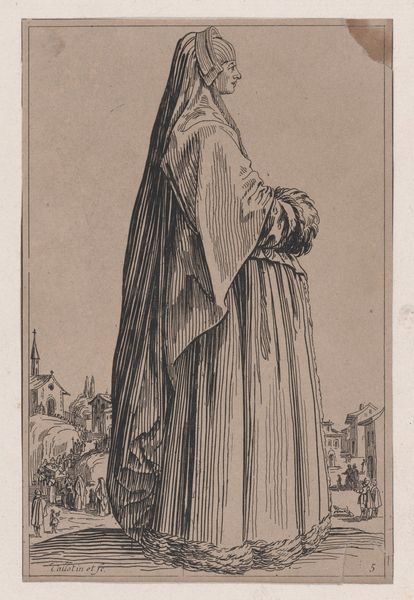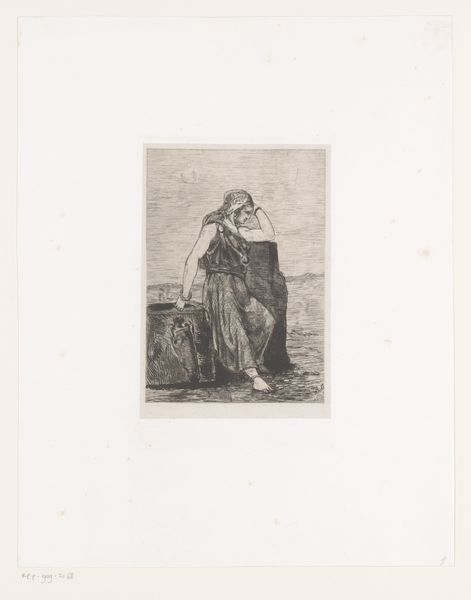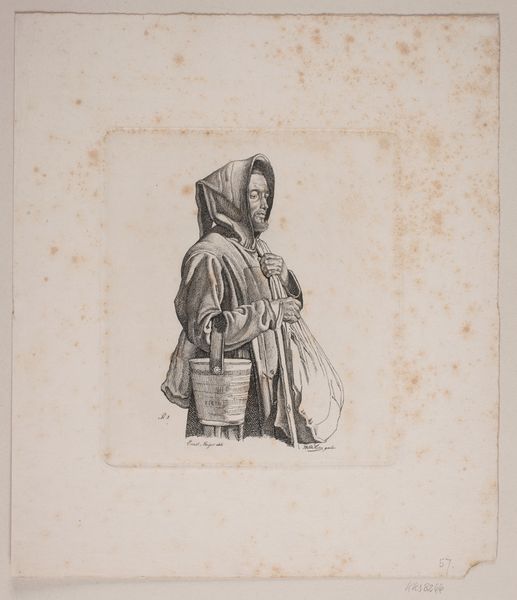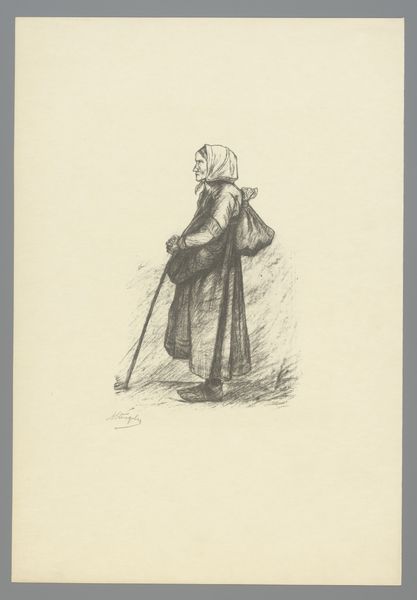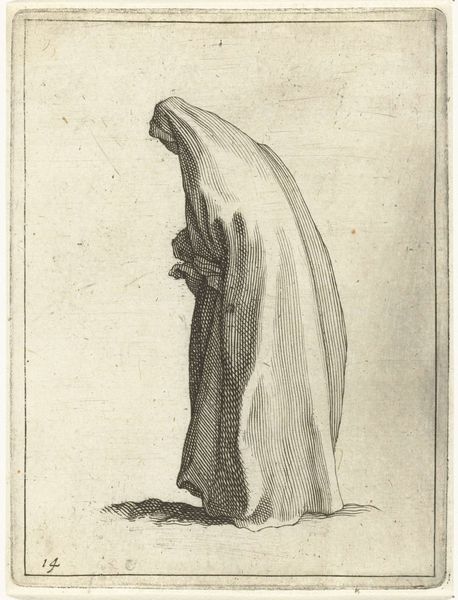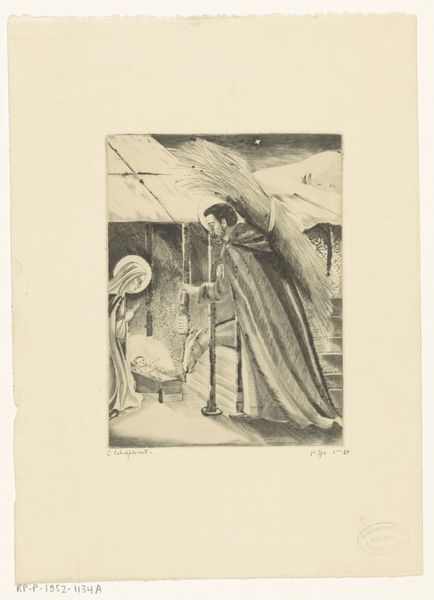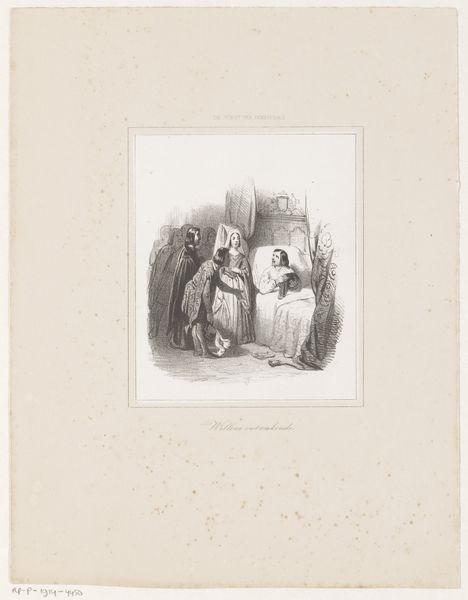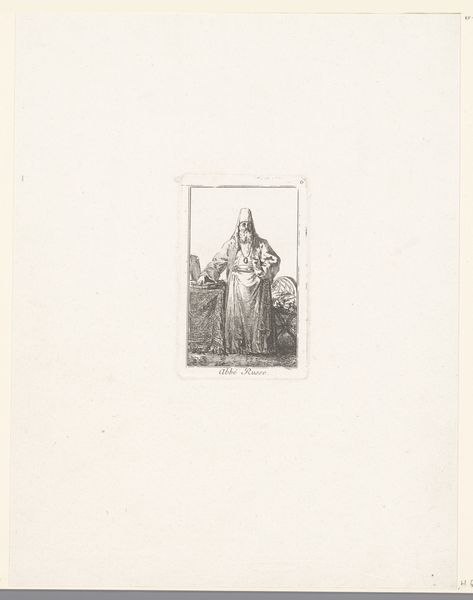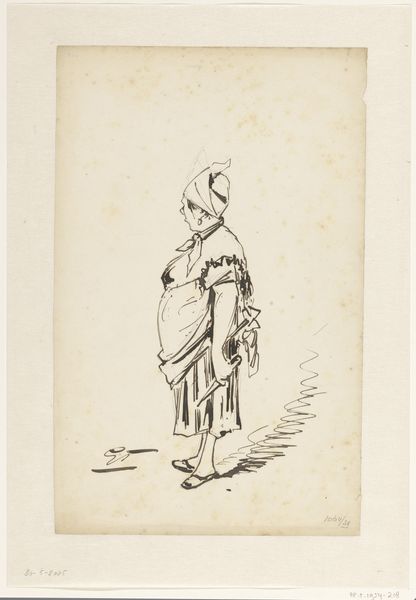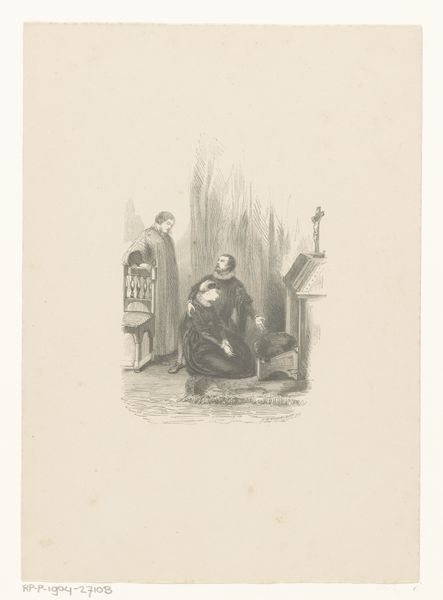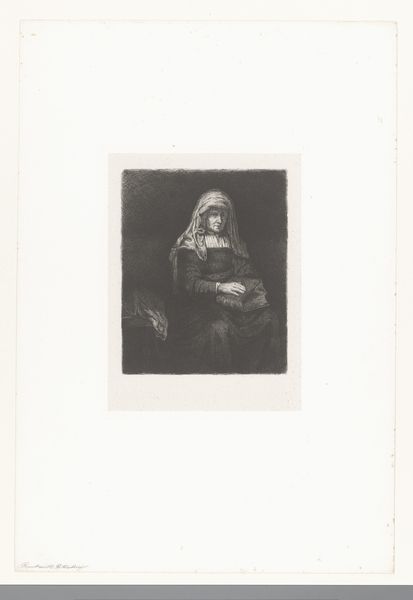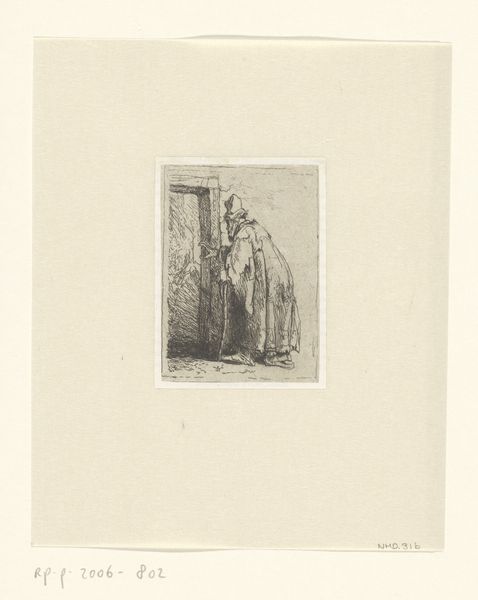
Dimensions: height 290 mm, width 220 mm
Copyright: Rijks Museum: Open Domain
Editor: This print, "Vrouw met een gitaar leunend tegen een muur" made between 1848 and 1865 by E. Blum, shows a woman with a guitar leaning against a wall. It's rendered with such fine lines; the overall mood feels contemplative, even a little melancholic. What does this piece evoke in you? Curator: What strikes me is how this print reflects the rising interest in representing the everyday lives of ordinary people in the mid-19th century. Do you notice how her posture suggests a certain resignation or weariness? Consider the social context; industrialization was changing lives, and we see more of the working class depicted in art. Editor: I do see the weight in her posture now. The way the shawl is draped makes it seem heavy, almost like a burden. So you're saying this piece offers a glimpse into the life of the working class at the time? Curator: Precisely. But look closer – there's the guitar. Music offered an escape, and this simple print puts this woman at a fascinating crossroads, highlighting the societal constraints she may have been facing, yet hinting at her individuality through the inclusion of the guitar, symbolizing that even within the confines of working-class life, culture and the arts are possible, wouldn't you agree? Editor: Absolutely. The guitar does suggest an interior life, a form of personal expression amidst a challenging external reality. Curator: And it questions what role women, particularly women from the working classes, played in artistic practices or performances during that era, when opportunities were often severely limited due to their class and gender. Editor: That's a side I hadn't considered! I'm taking away a richer appreciation for how art like this serves as a subtle historical record. Thank you! Curator: And I think it’s important to remember that prints like these weren't just documents; they played a part in shaping public perception of working class people in that era. I've really enjoyed reconsidering that with you.
Comments
No comments
Be the first to comment and join the conversation on the ultimate creative platform.
